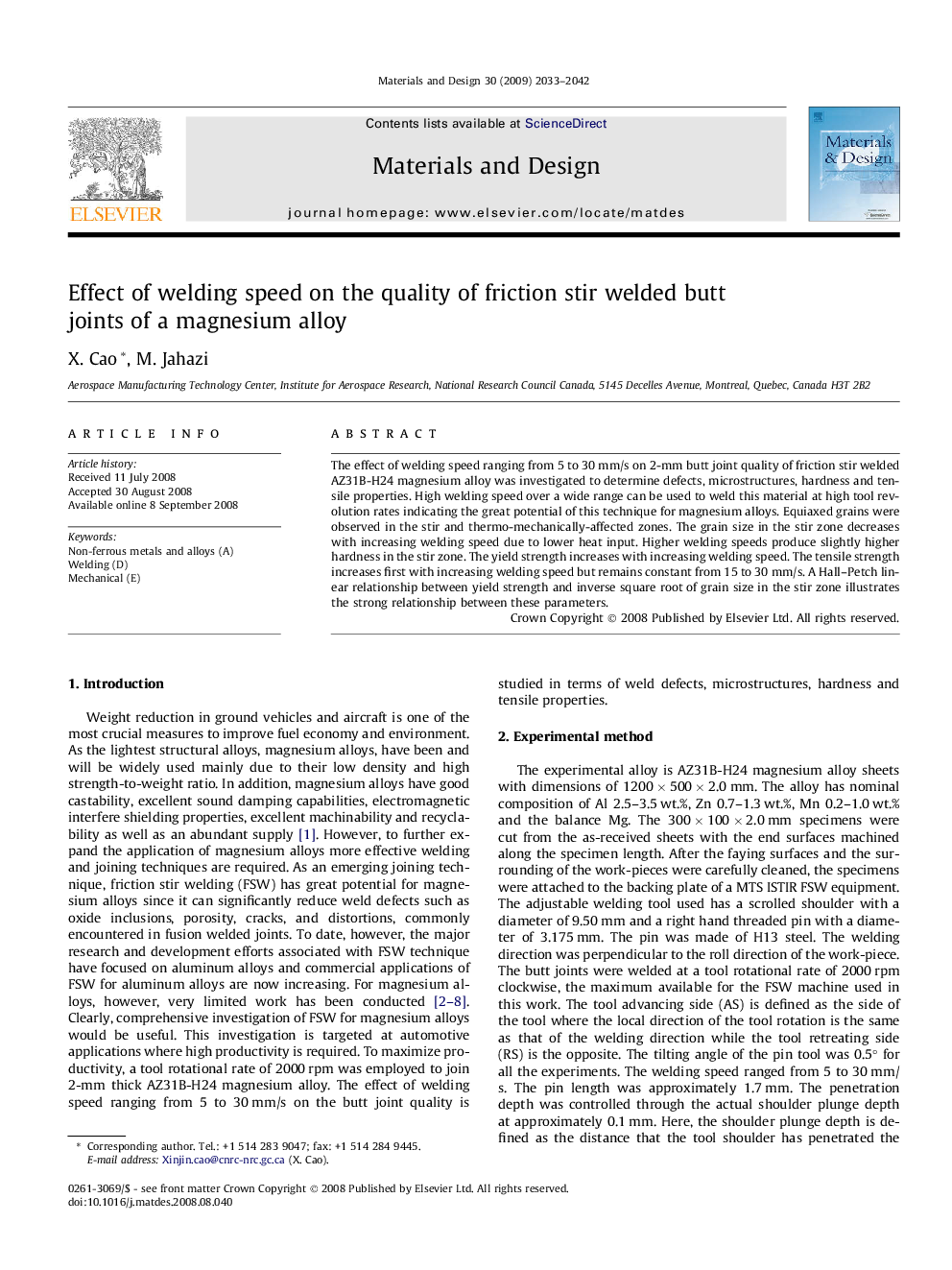| Article ID | Journal | Published Year | Pages | File Type |
|---|---|---|---|---|
| 832720 | Materials & Design (1980-2015) | 2009 | 10 Pages |
The effect of welding speed ranging from 5 to 30 mm/s on 2-mm butt joint quality of friction stir welded AZ31B-H24 magnesium alloy was investigated to determine defects, microstructures, hardness and tensile properties. High welding speed over a wide range can be used to weld this material at high tool revolution rates indicating the great potential of this technique for magnesium alloys. Equiaxed grains were observed in the stir and thermo-mechanically-affected zones. The grain size in the stir zone decreases with increasing welding speed due to lower heat input. Higher welding speeds produce slightly higher hardness in the stir zone. The yield strength increases with increasing welding speed. The tensile strength increases first with increasing welding speed but remains constant from 15 to 30 mm/s. A Hall–Petch linear relationship between yield strength and inverse square root of grain size in the stir zone illustrates the strong relationship between these parameters.
